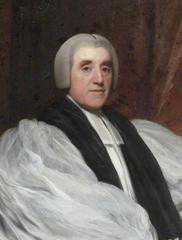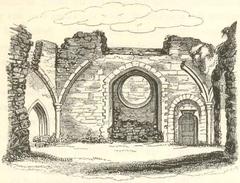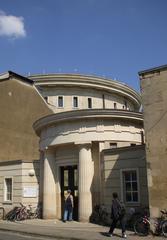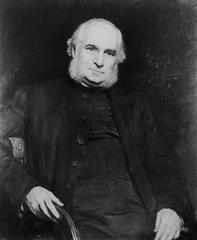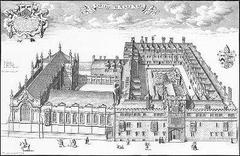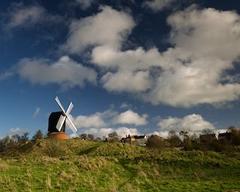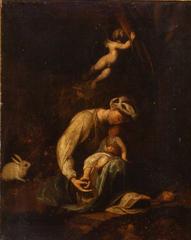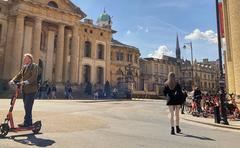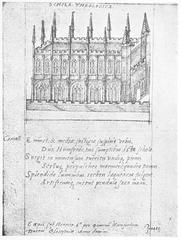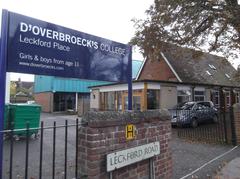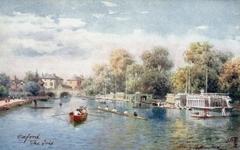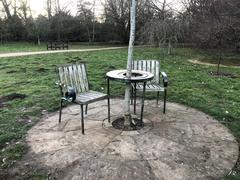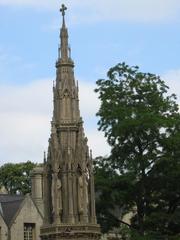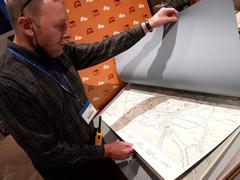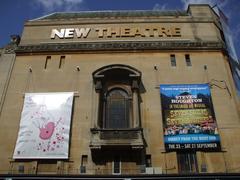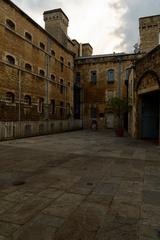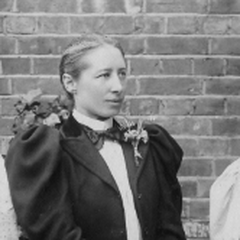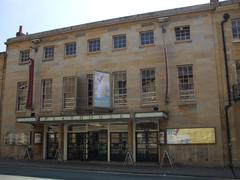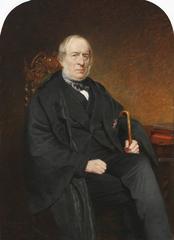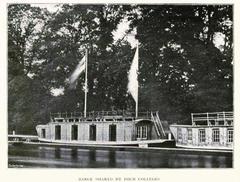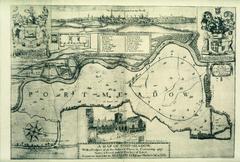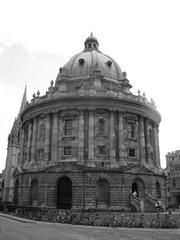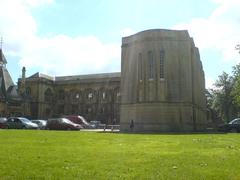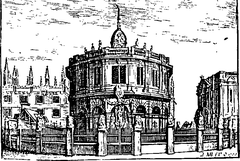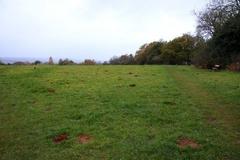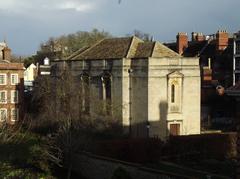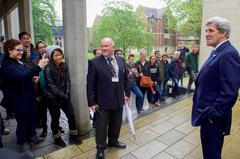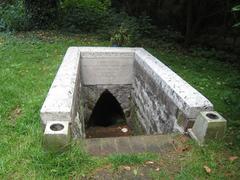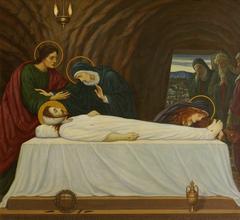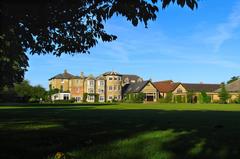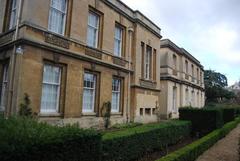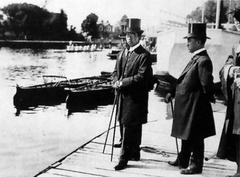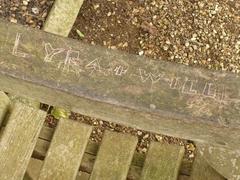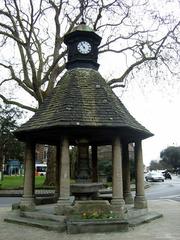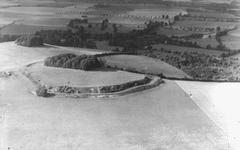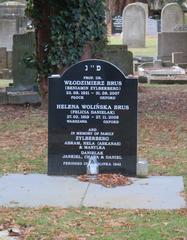Bastion I Oxford Visiting Hours, Tickets, and Historical Sites Guide
Date: 14/06/2025
Introduction to Bastion I Oxford: A Window into Medieval Heritage
Bastion I is a striking remnant of Oxford’s medieval city defences, standing at the crossroads of history, architecture, and urban development. Situated near New Inn Hall Street and the Oxford Castle Quarter, Bastion I forms part of the city’s ancient stone walls, which date back to the early 13th century. The walls themselves were originally conceived as earthwork ramparts in the late Anglo-Saxon period, designed to protect Oxford from Viking invasions. Over time, they evolved into sophisticated fortifications featuring semi-circular bastions, crenellated parapets, and arrow loops—hallmarks of advanced medieval military architecture (Oxford Preservation Trust; Oxford History).
More than just a defensive structure, Bastion I and the city wall symbolize Oxford’s civic autonomy and legal boundaries, shaping the city’s development and street patterns for centuries. Today, Bastion I is freely accessible from public streets and frequently featured in guided tours that delve into Oxford’s defensive strategies and urban evolution (Oxford Castle & Prison).
This guide provides all the essential information you need to explore Bastion I: visiting hours, ticketing, accessibility, preservation, and nearby attractions. You’ll also discover the bastion’s architectural significance, the story of its survival, and its enduring role in Oxford’s cultural identity. Whether you’re a history buff, an architecture enthusiast, or a curious traveler, Bastion I offers a vivid journey into Oxford’s past (Lonely Planet; Nature.com).
Contents
- Introduction
- Early Origins of Oxford’s Defences
- Medieval Expansion and the Stone Wall
- Bastion I: Location and Architectural Features
- Historical Significance of the City Wall and Bastion I
- Visiting Bastion I: Hours, Tickets, and Travel Tips
- Accessibility and Facilities
- Nearby Attractions and Events
- Preservation and Modern Context
- Architectural and Archaeological Insights
- Cultural and Symbolic Importance
- Frequently Asked Questions (FAQ)
- Conclusion and Recommendations
- Sources and Further Reading
Early Origins of Oxford’s Defences
The roots of Oxford’s city wall, including Bastion I, reach back to the late Anglo-Saxon era. Built in response to persistent threats from Viking raiders, the original defences were likely earthworks constructed in the late 9th or early 10th century under King Alfred the Great (AD 871–899). The Burghal Hidage, a document listing fortified towns, indicates that Oxford’s early wall circuit was just over a mile long—smaller than the later medieval enclosure (Oxford Preservation Trust; British History Online).
Recent archaeological excavations at sites such as Oriel College have uncovered defensive ditches dating to around AD 900, confirming the city’s original boundary and offering new insights into Oxford’s early defensive layout (Oxford History).
Medieval Expansion and the Stone Wall
The stone walls visible today primarily date from the 13th century, when the original earthworks were replaced and expanded. The circuit grew to about two miles, enclosing roughly 115 acres and incorporating at least 21 semi-circular bastions, including Bastion I (Oxford History). These innovations improved defensive coverage and addressed vulnerabilities at key points.
The wall’s four main gates—North, South, East, and West—were associated with prominent churches and served as toll and control points, which shaped the city’s economic and legal geography. The alignment of the wall influenced the placement of key roads, colleges, and public spaces in Oxford’s urban core.
Bastion I: Location and Architectural Features
Bastion I is the first prominent bastion encountered from New Inn Hall Street, near the History Faculty building (Oxford Preservation Trust). Characterized by its outward semi-circular projection, Bastion I was designed to enable crossfire along the adjoining curtain walls through narrow arrow loops. The robust stonework, crenellated parapet, and internal wall walk reflect early 13th-century military innovations. While many sections of the wall have been lost or incorporated into later structures, Bastion I remains highly visible and accessible (Oxford History).
Historical Significance of the City Wall and Bastion I
Throughout its history, Oxford’s city wall and Bastion I played central roles in the city’s defence and identity. The wall withstood periods of conflict, including the Anarchy (12th century) and the English Civil War (17th century). It marked Oxford’s autonomy as a borough and influenced the development of the University and the city’s legal boundaries.
Bastion I, as a surviving example of medieval fortification, provides a tangible link to the city’s past and acts as a focal point for exploring Oxford’s broader urban defences (Oxford Preservation Trust).
Visiting Bastion I: Hours, Tickets, and Travel Tips
Visiting Hours and Ticket Information
- Bastion I is accessible at any time from public streets, free of charge.
- Oxford Castle & Prison (which includes other historic features and guided tours): Open daily, typically 10:00–17:30 (last entry at 16:00). Please check the official website for seasonal adjustments.
- Tickets: Required only for guided tours or entry to the prison and tower. Adult tickets are around £15 (2025 prices), with concessions and family tickets available (Miss Tourist). Advance booking is recommended, especially during weekends and holidays.
How to Get There
- On Foot: Bastion I is a 10-minute walk from Oxford’s main rail and coach stations. It’s situated adjacent to New Road and Castle Street (Oxford City Guide).
- By Car: Public parking is available at Westgate and Worcester Street, but spaces are limited—public transport is preferable (Oxford University Visitor Information).
- Public Transport: Numerous buses serve the area, and the city centre is pedestrian-friendly.
Accessibility and Facilities
- Street-level access and paved walkways allow for generally easy viewing, though some uneven surfaces and steps exist.
- Wheelchair Accessibility: Bastion I itself is accessible from New Inn Hall Street; other wall sections may have limited access due to historic constraints (Oxford University Access Guide).
- Toilets: Public restrooms are available within the Oxford Castle Quarter and nearby shopping centres.
- Assistance Dogs: Welcome throughout the site.
Guided Tours and Interpretation
- Guided Tours: Offered by Oxford Castle & Prison, these tours provide context on the city walls, castle, and Bastion I’s role in history. Tours last 50–60 minutes and cover St George’s Tower, the crypt, and prison cells (Lonely Planet).
- Audio Guides: Available in multiple languages.
- Printed Materials: Maps and informational brochures can be obtained at the visitor centre.
Nearby Attractions and Events
- Oxford Castle & Prison: Guided tours, crypt, and tower (Oxford Castle & Prison).
- St George’s Tower: The oldest building in Oxford, with panoramic city views.
- Ashmolean Museum: World-renowned university museum; free entry (VisitBritain).
- Bodleian Library: Iconic library, open for guided tours.
- Westgate Oxford: Shopping and dining district.
- Seasonal Events: Historical reenactments and festivals are often held in the castle quarter.
Preservation and Modern Context
Bastion I and surviving wall sections are protected as listed structures, with ongoing conservation led by organizations like the Oxford Preservation Trust (Oxford History). Archaeological investigations continue to reveal details about the construction and evolution of Oxford’s defences (Oxford Preservation Trust).
Architectural and Archaeological Insights
Bastion I illustrates the transition from earthwork ramparts to robust stone fortifications, incorporating features like semi-circular bastions, crenellations, and arrow loops (British History Online; Nature.com). Its geometry and design were advanced for their time, optimizing defensive coverage and structural stability.
Cultural and Symbolic Importance
The city wall and Bastion I represent Oxford’s emergence as a defended urban centre and a community with distinctive civic identity. A traditional rhyme—“At North-Gate and at South-Gate too / St Michael guards the way, / While o’er the East and o’er the West / St Peter holds his sway”—captures the wall’s blend of religious and military significance (Oxford History).
Frequently Asked Questions (FAQ)
What are Bastion I’s visiting hours?
Bastion I is accessible any time from public streets. Access to internal castle areas follows Oxford Castle & Prison hours (typically 10:00–17:30).
Is there an entry fee to see Bastion I?
No, it is free to view from outside. Tickets are only required for guided tours or entry to the castle and tower (Oxford Castle & Prison).
Are guided tours available?
Yes, guided tours are available and recommended for a full historical experience.
Is Bastion I wheelchair accessible?
Yes, from street level; some historic areas may have limited access (Oxford University Access Guide).
Can I take photos at Bastion I?
Personal photography is permitted. Commercial use requires advance permission.
Conclusion and Recommendations
Bastion I is an essential stop for anyone exploring Oxford’s historical landscape. It offers an authentic link to the city’s medieval origins and a case study in architectural evolution and urban identity. With free access, rich interpretive resources, and a central location amid Oxford’s top attractions, Bastion I is both educational and inspiring.
Plan your visit today:
- Check current opening hours and ticket options at Oxford Castle & Prison.
- Download the Audiala app for up-to-date guides and audio tours.
- Visit the Oxford Visitor Information Centre for maps and local tips.
Sources and Further Reading
- Oxford Preservation Trust
- Oxford History
- TouristPlatform
- Nature.com
- Miss Tourist
- Oxford Castle & Prison
- Oxford University Visitor Information
- Lonely Planet
- Oxford City Guide
- VisitBritain
- British History Online
- Anywhere We Roam
